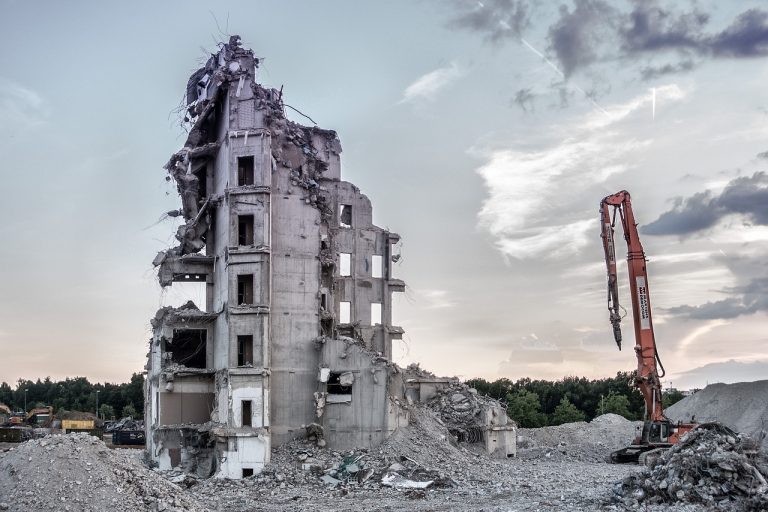In the quiet hills of northeastern Ohio, a historic hospital building has stood abandoned for many years, its fate now sealed. The Molly Stark Hospital, once a cornerstone of medical care for the Canton area, is slated for demolition. This is due to growing concerns about the health risks associated with asbestos contamination.
The building, which has become a symbol of both progress and decay, now faces the prospect of being reduced to rubble. This marks the end of an era and raises significant health and safety concerns for local residents.
A Historical Overview of Molly Stark Hospital
Molly Stark Hospital was established in the early 20th century and served as an essential healthcare facility for the community. Located near Canton, the hospital became known for providing quality care to generations of families in the area.
It was designed based on the medical theories that were believed in the early 20th century. As stated by Abandoned Spaces, it played a significant role during the tuberculosis epidemic.
However, advancements in medical technology led to the development of antibiotics for tuberculosis. This led to the decline of the demand and need for the hospital. Thus, after operating from 1929 to 1995, it closed its doors to patients.
Despite its long history and deep connection to the local community, the hospital’s decline mirrored many other aging institutions. With time, newer, more modern facilities replaced it. After its closure, the building remained vacant for decades. While its doors were locked, its walls still echoed with the memories of those who worked and received care within its halls.
After several decades, there have now been many concerns with the building. Many people say that the place is now haunted. It is touted to be one of the most haunted places in Ohio, and people are even asked not to enter it. However, the reason to warn people not to enter the building is because of asbestos presence.
The Growing Concerns About Asbestos
In recent years, the Molly Stark Hospital has become a focal point for health and safety concerns. This is particularly due to the discovery of asbestos in its building materials. Asbestos, a once-popular construction material, was widely used in the mid-20th century for its insulating and fire-resistant properties.
However, it has since been linked to severe health risks, which can be deadly. According to the World Health Organization, it can lead to health problems like lung cancer, asbestosis, and mesothelioma.
To give you a hint, around 200,000 deaths occur annually due to work-related asbestos exposure. The dangers of asbestos exposure are particularly concerning when the material is disturbed, releasing harmful fibers that can be inhaled.
Since asbestos can pose serious health issues, people exposed to it during work or from old buildings can file lawsuits against negligent parties. Those who are exposed to this substance from structural buildings can file asbestos lawsuits against property owners. Victims can prove negligence on the property owner’s part to seek compensation for treatment of the health problems faced due to the exposure.
As stated by TorHoerman Law, victims can claim compensation for medical expenses, lost wages, pain and suffering, etc. Seeking help from an experienced attorney can help you navigate the challenging legal landscape. This will enable you to prove the link between your health condition and asbestos to get the compensation.
The Decision to Demolish
Local authorities, including public health officials and environmental agencies, have repeatedly assessed the hospital’s condition and the risks it poses. For many years, owners of the property tried to find a way to redevelop the structure. However, they have finally decided to demolish the building.
Given the magnitude of the problem, the demolition of the former hospital has been deemed the safest course of action. The removal of such an iconic building is never an easy decision, especially one tied to decades of history and local heritage. However, public safety must always come first.
Recently, Stark Parks, the owner, has received $2.3 million in grants to demolish the building. The grant is said to cover around 75% of the entire project. Stark Parks has estimated the cost of the project to be around $3.1 million. The company’s representatives state that they plan to get the remaining funds through various sources.
Frequently Asked Questions
What is the reason behind the prolonged abandonment of the Molly Stark Hospital?
Several circumstances led to the closure of Molly Stark Hospital decades ago. This included the area’s development of more contemporary medical facilities and the hospital’s antiquated infrastructure. Since it was closed, the exorbitant cost of addressing asbestos and other structural problems has hindered attempts to repurpose the facility.
Will any portions of the hospital be saved before it is demolished?
Yes, there might be initiatives to save the building’s historically or architecturally noteworthy features. To honor the hospital’s legacy, items like plaques, ornamental elements, or other antiques may be saved for community exhibits or local museums.
What is the estimated duration of the demolition process?
The amount of asbestos that must be removed and the difficulty of securely disassembling the building will determine how long the demolition process takes. Taking into account environmental evaluations and cleanup, experts predict the procedure might take several months to a year to finish.
The community has struck a balance between honoring history and putting public health first with the demolition. The experiences of patients and the hospital’s function in the community will endure even if it will no longer be a tangible reminder. The necessity of tackling environmental concerns, especially the dangers of asbestos, is brought home by the demolition process.

